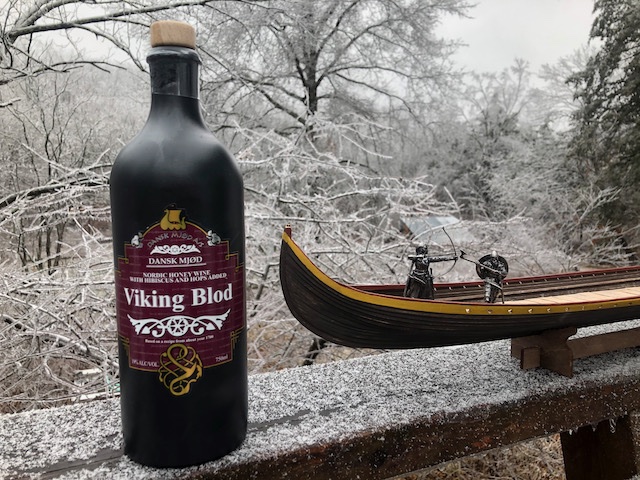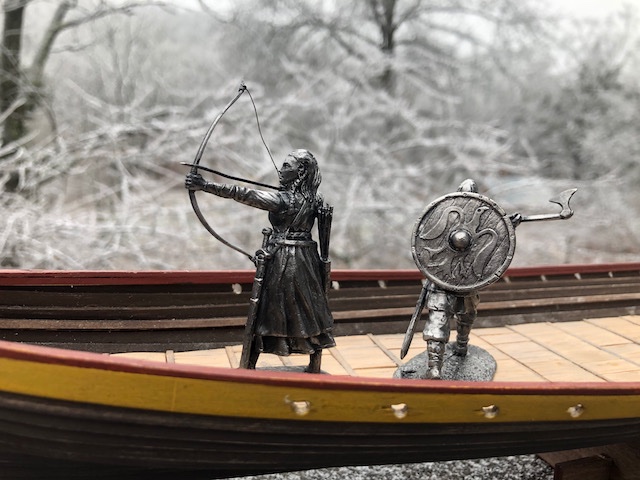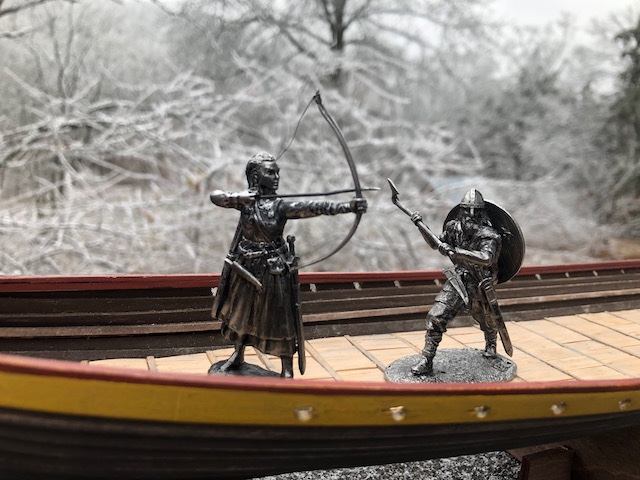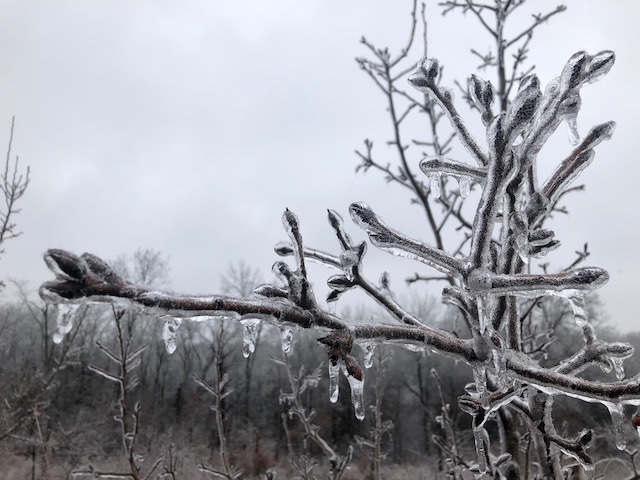-
Posts
3,532 -
Joined
-
Last visited
Content Type
Profiles
Forums
Gallery
Events
Everything posted by Cathead
-
It looks like the planks aren't taking their intended curve properly, maybe helped along by the lack of frame fairing. Did you pre-bend them using water and/or heat? That's the standard approach, which rearranges the wood fibers to hold their shape when dry/cool. Most planks won't want to lie in their intended curves without doing something along those lines, it's the nature of hull geometry. Gregory is right that adding some thin material to the frames can fill that space, but that's not necessarily going to fix the problem overall, as each successive plank may keep bowing outward unless you get them bent properly in the first place. I.e., it looks like those planks are bowing outward, not sitting in the proper orientation with just a thin, even gap above the frame. Kits sometimes do get bulkheads wrong, requiring such spacers, but the first step should be assuming that the plank needs work, not the bulkhead. For example, you may also need to be tapering these planks, which helps them take the intended curve (as most hulls narrow toward the stern, each run of planking has to get thinner than it is at the full width amidships). I can't tell from your photo angle if you've done this or not. Rule of thumb, test-fit every plank using clamps before gluing. If it doesn't sit properly with the right bend, something needs to be addressed. Can you share with us a photo of the directions for this step and what the planks look like at the transom? Do the directions say anything about tapering planks? Is there a drawing of how the kit is meant to look at this stage? More information will help us give you better advice. Other broader suggestions: Read through a few planking tutorials here in MSW to ensure that you understand the general principles. Search for other build logs for this model and consult their photos and methods (for example, here's one not on MSW that has lots of detailed photos that I found in 30 seconds of searching). Start your own build log that tracks everything you do on this model. Starting new topics for every question you have on this specific build (looks like this is your third) clutters up the forums by repeating questions already asked and answered elsewhere, while making it harder for people to answer your questions (as they don't know what else you've done or asked on your model). We'd love to help you learn the skills of this really fun hobby, so keep at it and help us help you by providing more information and organizing your questions in a way that will be easier to answer as you progress.
-
Looks a bit like my bedroom as a kid! What a wonderful gift! Life certainly gets in all of our ways, thanks for the update.
- 86 replies
-
- king of the mississippi
- artesania latina
-
(and 2 more)
Tagged with:
-
How's your model coming? You got off to a nice start, I hope you can keep working and keep us updated.
-
Whatever happened? Have you started the new kit, or still fiddling with this one? Interested minds want to know!
-
You were right about this, that bedroom must have been some project! Have you returned to this model? We'd love to know how you're progressing.
- 86 replies
-
- king of the mississippi
- artesania latina
-
(and 2 more)
Tagged with:
-

New Young Model Builder from Minnesota LOOKING FOR ADVICE
Cathead replied to Kenna's topic in New member Introductions
We haven't heard from you in a long time, how did your project come along? You had a lot of people interested, I hope you can update us! -
It's been a month, how is your model coming along?
- 602 replies
-
- Flying Fish
- Model Shipways
-
(and 2 more)
Tagged with:
-
Glad to see another convert. I, too, got into wooden modeling after doing lots of other styles and find that nothing is as challenging and fulfilling to me in terms of craftsmanship and results. That looks like enough warp to need fixing. First step could be to wet it, then weigh it down thoroughly on a flat surface and let it dry. This is a fun prototype that I've always longed to build, as a geologist and naturalist. If it's of interest, a few years ago (seems like a lifetime) I was fortunate to visit a full-scale Beagle replica being built in southern Chile. I posted a number of photos here, which you're welcome to peruse if they'd be of interest or use as a reference or inspiration. No promises that it's 100% accurate, but it might be useful nonetheless. Looking forward to seeing this come together!
-
A good start on an interesting kit, it'll be fun to see how it turns out. Glad to see you got the photos working.
-

Chaperon by joep4567 - 1:48 - Sternwheeler
Cathead replied to joep4567's topic in - Build logs for subjects built 1801 - 1850
I'm curious about your decision-making on having the hog chains arc so high above the hurricane deck. Is this a personal aesthetic decision or are you basing it on a different prototype? -
Oh, cool! Thanks for sharing that. I thought the style looked authentic when I chose that figure, but didn't realize there was a specific precursor. Also, here's a panorama shot of the ice storm landscape here. Notice the copse bending into a wye at right.
-
Happy New Year from the Viking shipyard. We're in the middle of a moderate ice storm that's hanging in the balance of getting much worse vs. being manageable. Seemed like an appropriate backdrop to share a few holiday photos with the latest additions to this build's arc, two more figures and a Danish mead. We brew a lot of mead ourselves, but Mrs. Cathead found this and thought it'd be a fun comparison to our products and highly topical. Speaking of mead, one of our favorite versions is pear, which I make in early summer after thinning the pears in our orchard. The roughly golf-ball-sized green pears get chopped into the initial ferment, infusing their fruity flavor into the mead and making a really distinct final product. It's a great way to use these otherwise wasted fruits. However, we need this ice storm to get no worse, as here's what the pear trees look like at the moment: The ice itself isn't a problem (in terms of temperature) but if it gets much thicker branches will start breaking, and that IS a problem. Getting back to the model, here are closeups of the latest crewmembers: I've wanted at least one proper axeman, and I really like the raven on his shield. And I thought Mrs. Cathead should have representation as well. Again, best wishes for a better 2021 for all of us.
-

Chaperon by joep4567 - 1:48 - Sternwheeler
Cathead replied to joep4567's topic in - Build logs for subjects built 1801 - 1850
I can imagine! You did a nice job. -
What you need to do is learn how such models are built in general, and then apply those skills to this (or any) model. Take the time to read the excellent planking tutorials here on MSW. Make a few mockups and practice the techniques described. When you understand the skill, apply it to your model. Do not expect a magic tool to replace knowledge, skill, and patience. The technique you are trying is akin to trying to learn to play trumpet by memorizing all the finger combinations to a specific tune, rather than studying music theory and learning how the trumpet actually works. Once you master those, you can play all sorts of songs. Otherwise you'll bang your head against the wall trying to learn one song without ever really understanding the instrument.
-
I'm going to be a bit of a young curmudgeon here and say that I did not find most of the standard books on wooden ship building particularly helpful when I was getting started 4-5 years ago. Most of them felt very out of date, frankly, and really weren't relevant to the quality and development level of modern kits. And this is coming from a voracious consumer of books who loves to learn by reading. As Roger says, a well-designed modern kit, with good instructions, will likely teach you at least as much as a decades-old book, and you'll be doing while you learn. As will spending time engaging with this forum and reading others' build logs. Even as references, books may not be as handy as the internet for a beginner; eventually you may want the definitive tome on 18th century rigging practices, but at any level of introduction to the hobby you may well be better off learning from others online and searching for the specific answers you want. Not to mention that videos are often better teachers these days than old books. Everyone learns differently, so this may not apply to you. But at the very least, you might consider requesting a few books through interlibrary loan to see if they are actually good matches for you before you splash out lots of money for a library. I quickly outgrew what little I did learn from the books I bought, and now wish I'd put that money to better use as the books now gather dust since they became irrelevant within a year, especially once I found MSW with its far broader scope of far more up to date information and advice.
About us
Modelshipworld - Advancing Ship Modeling through Research
SSL Secured
Your security is important for us so this Website is SSL-Secured
NRG Mailing Address
Nautical Research Guild
237 South Lincoln Street
Westmont IL, 60559-1917
Model Ship World ® and the MSW logo are Registered Trademarks, and belong to the Nautical Research Guild (United States Patent and Trademark Office: No. 6,929,264 & No. 6,929,274, registered Dec. 20, 2022)
Helpful Links
About the NRG
If you enjoy building ship models that are historically accurate as well as beautiful, then The Nautical Research Guild (NRG) is just right for you.
The Guild is a non-profit educational organization whose mission is to “Advance Ship Modeling Through Research”. We provide support to our members in their efforts to raise the quality of their model ships.
The Nautical Research Guild has published our world-renowned quarterly magazine, The Nautical Research Journal, since 1955. The pages of the Journal are full of articles by accomplished ship modelers who show you how they create those exquisite details on their models, and by maritime historians who show you the correct details to build. The Journal is available in both print and digital editions. Go to the NRG web site (www.thenrg.org) to download a complimentary digital copy of the Journal. The NRG also publishes plan sets, books and compilations of back issues of the Journal and the former Ships in Scale and Model Ship Builder magazines.








